Aussie Escargot - 1951-55 Hartnett #Blogpost
Prior to the second world war, GM Holden sold GM cars, mostly Chevrolets and Vauxhalls, with Australian-made bodies and imported chassis. With monocoque cars set to become commonplace, it was a practice that could continue forever.

Prior to the second world war, GM Holden sold GM cars, mostly Chevrolets and Vauxhalls, with Australian-made bodies and imported chassis. With monocoque cars set to become commonplace, it was a practice that could continue forever. Lawrence Hartnett was the man who convinced GM to enter into full manufacturing in Australia. It was an attempt to stop the Australian government from forming a state-owned car manufacturer that would erode GM Holden’s market share.
Hartnett wanted was an Australian car designed for Australian conditions, and pitched such a design. GM had other plans. When they adapted a rejected post-war compact Chevrolet, Hartnett left GM. Immediately after its 1948 introduction, the Holden 48-215 dominated the Australian new car market. Meanwhile Hartnett was becoming friendly with a number of federal politicians, including Prime Minister Ben Chifley. In 1948, identifying a gap in the market for a smaller car, he established his own car company.
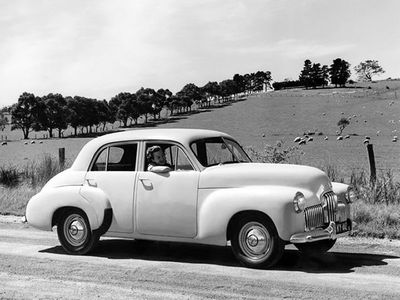
In order to get his company going, Hartnett sought funding from the federal government, who were keen to provide Holden with some competition. On the 28th November 1948, Hartnett met with Chifley, who agreed to provide financial support for the project. The following february, the Hartnett Motor Company was officially announced, with the company formed and a prospectus released in August. The company had the ambitious target of 5,000 cars in the first year and 10,000 in subsequent years.
First though, they needed a car. Ironically, given Laurence’s reason for leaving GM, he found one in a small, front wheel drive prototype designed by Frenchman Jean-Albert Grégoire. Three prototypes using the same mechanical package with different styling had already been developed for sale as the French Panhard Dyna and Simca brands, and the British Kendall. Development of the Kendall had been undertaken by Grantham Productions Limited, but abandoned due to financial constraints. To save time and money producing his own, Hartnett purchased all of Grantham’s tooling was for £30,000, and brought it back to Australia, where the state governments were competing to have the factory in their state. Frankston, in south-east Melbourne was chosen at the 11th hour over Sydney.
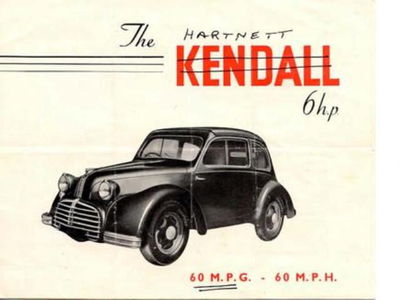
Grégoire was a pioneer of front wheel drive. His Tracta FWD system was produced under licence by various European manufacturers, although he was frequently underpaid for the rights. He later designed the Amilcar Compound, produced by German brand Hotchkiss. As well as offering advanced features such as rack and pinion steering and independent suspension, the Amilcar debuted the Alpax light alloy construction. After being demobilised by Hotchkiss during the war for refusing to assist the German military, he designed Aluminium-Francais Gregoire in secret.
The Hartnett carried over the Alpax construction from the Amilcar Compound. Its chassis consisted of six cast aluminium sections bolted together. Aluminium was chosen because it was lighter and cheaper to manufacture than pressed steel. The external body panels were steel. Four wheel independent suspension was another feature borrowed from the Compound, and was rare in a car intended for mass production.
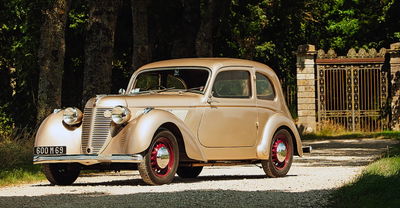
The car was powered by a 594cc air cooled flat twin, which in the Hartnett was built in the UK by F. M. Aspin and Co. Ltd, in Lancashire under a £500,000 contract.
Despite assurances of government support,and the supposed desire to reign in Holden, Hartnett wasn’t receiving the same level of support as Holden from government owned businesses. The then state-owned Commonwealth Bank had given Holden a £1 million overdraft to establish a factory , but had not offered the same to Hartnett. When questioned by the opposition, the government argued that it was a confidential matter between the Commonwealth Bank and Hartnett. The government-owned Commonwealth Engineering Co. was also creating headaches, failing to provide panel pressings. The panels were supposed to be delivered in May 1951, but in June 1952, they had not been received. Hartnett reported to creditors with a £62,000 debt and an inability to produce any cars. Not that that would have improved Hartnett’s situation. Despite Lawrence’s claim of 2,000 orders, only 320 Hartnetts had been ordered. With orders well below what had been promised and ongoing supply issues, Hartnett was wound down in 1955. Laurence went on to import Nissans in 1959, a much more successful venture than Hartnett.
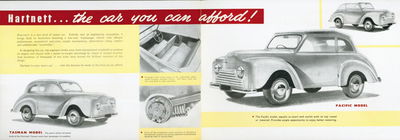
Of the 320 that were ordered, only 125 were actually delivered, and all featured hand coachwork. The Hartnett was initially offered as a sedan, known as the Tasman, which was later joined by the Pacific convertible. A Tourer wagon was also offered, but very few were built. As is often the way with cars like this, hardly any were saved. Why would you? It wasn’t a good car and it was a commercial failure. Only four are known to still survive. Three of them are museum pieces. The fourth is build number 11, a green Pacific. It is the only one still on the road. It had been owned by the same family since it was new in 1952 until it was sold at auction for $95,000 in 2015.
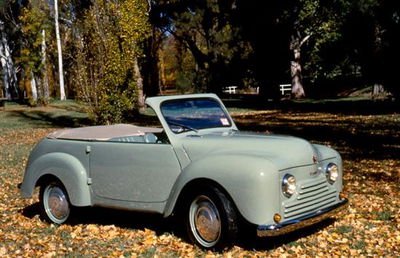
The Hartnett was largely unsuitable for Australian conditions, and that was reflected in low demand. It wasn’t that small cars didn’t sell well in Australia, they just didn’t sell in the numbers Laurence wanted. A few years later Buckle Motors managed to turn a profit from the even smaller Goggomobil, but the approach was different. Goggomobil was only ever meant to be a low volume niche brand. Buckle had also started out with an even lower volume model, the Buckle Sports 2.5 litre, to get the manufacturing process right. Hartnett, although bringing experience from GM, jumped straight into the deep end.
Laurence Hartnett left GM because he wanted an all-Australian car, only to attempt to assemble a French one, relying heavily on government support to make it work. The Hartnett was unlikely to succeed, but if had, Australia’s motoring landscape would be very different.














Comments
As an Australian, I just had to read this article
Hotchkiss were French!